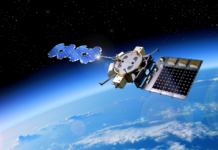If this continues we will end up having to rename it Little Red Spot. The red mole that made Jupiter’s profile so special for years is shrinking visibly. The resizing of the red stain on the surface of the giant planet, which is in fact changing its shape from an oval to a circle, has been known to us since the 1930s but it is surprising to see how much it has dried over the years. This is evidenced by the splendid new images of the Hubble Space Telescope.
The imperfection that gives Jupiter “something more” – as George Valentin might say, who in The Artist (by Michel Hazanavicius, Oscar winner 2011) drew a mole on the cheek of his beloved and beautiful Peggy Miller – is the result of a violent anticyclonic perturbation. In the Hubble images, it appears as a vermilion area enveloped in turbulent layers of yellow, orange, and white. The internal winds of this terrible Jupiter cyclone run at impressive speeds and reach speeds of hundreds of kilometers per hour.
The first observations of the Great Red Spot date back to the late 1800s. The knowledge of the time allowed us to calculate the area affected by the turbulence at an extension of about 41,000 kilometers at the widest point, which would be enough to host three planets such as Earth, one in a row to the other.
In 1979 and 1980, NASA’s Voyager spacecraft approached Jupiter for a series of fly-bys and calculated a restricted area at 23,335 kilometers. The new Hubble data suggests that the red spot has shrunk further in the meantime.
“Recent observations from the Hubble Space Telescope confirm that the Great Red Spot currently measures just under 16,500 kilometers. It’s the smallest diameter we’ve ever measured, ”explains Amy Simon from NASA Goddard Space Flight Center, Maryland, United States.
Already in 2012, amateur observations seemed to show a significant shrinkage of the area. The diameter is estimated to shrink by a thousand kilometers every year. But the cause of this shrinkage is yet to be determined: “From our new observations it is clear that a series of small eddies are feeding on the storm,” Simon presumes. “We hypothesize that they may be responsible for the change and have altered the internal dynamics of the anticyclonic perturbation”.
Simon’s team intends to continue with the study of these vortices and the dynamics within the red spot to determine how the stormy vortex is being fueled or deprived of its momentum. While waiting to find out more, we just have to resign ourselves to see the charming neo of Jupiter slowly disappear. Dermatology doesn’t spare the Solar System either.




